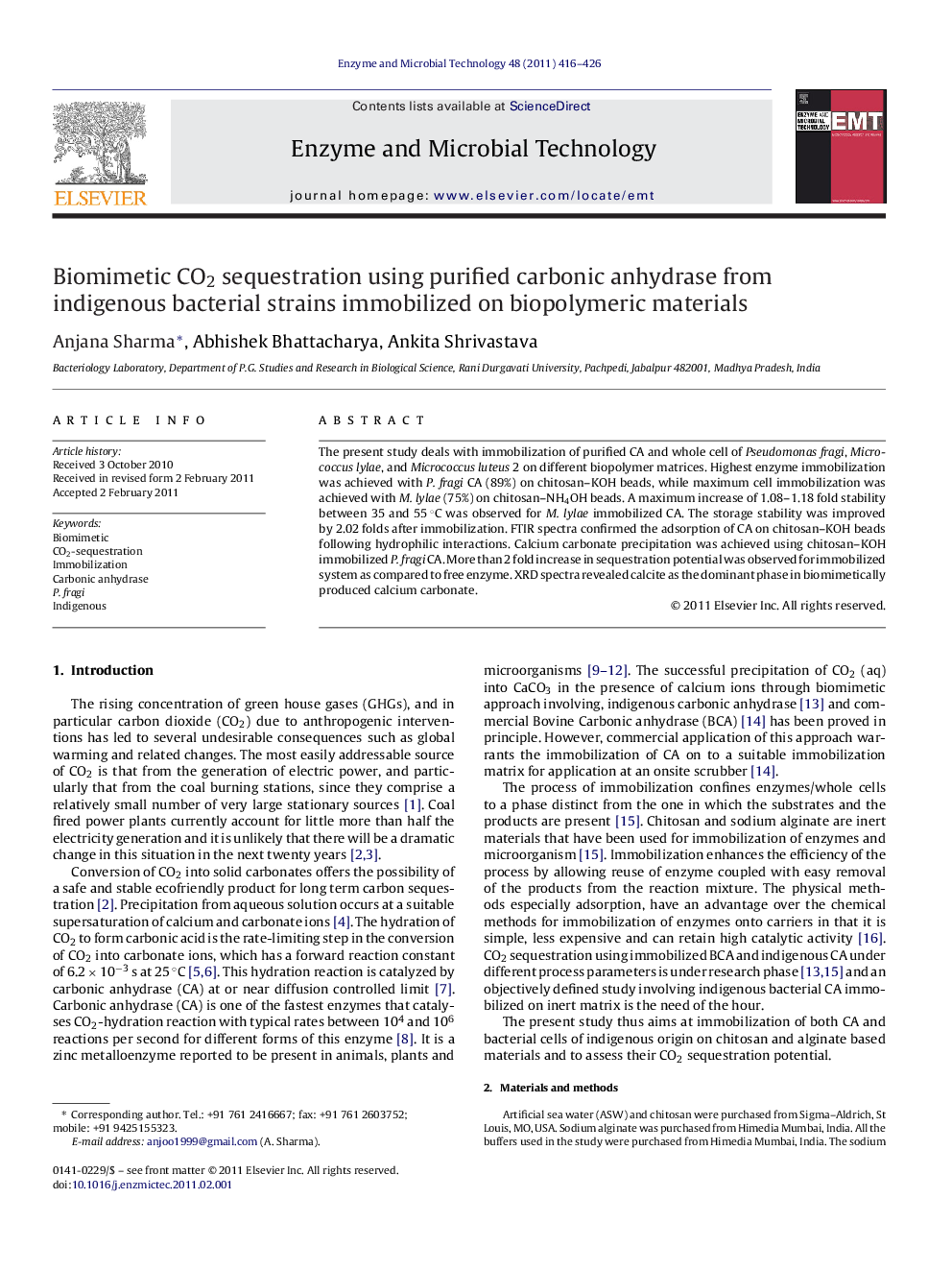| Article ID | Journal | Published Year | Pages | File Type |
|---|---|---|---|---|
| 17509 | Enzyme and Microbial Technology | 2011 | 11 Pages |
The present study deals with immobilization of purified CA and whole cell of Pseudomonas fragi, Micrococcus lylae, and Micrococcus luteus 2 on different biopolymer matrices. Highest enzyme immobilization was achieved with P. fragi CA (89%) on chitosan–KOH beads, while maximum cell immobilization was achieved with M. lylae (75%) on chitosan–NH4OH beads. A maximum increase of 1.08–1.18 fold stability between 35 and 55 °C was observed for M. lylae immobilized CA. The storage stability was improved by 2.02 folds after immobilization. FTIR spectra confirmed the adsorption of CA on chitosan–KOH beads following hydrophilic interactions. Calcium carbonate precipitation was achieved using chitosan–KOH immobilized P. fragi CA. More than 2 fold increase in sequestration potential was observed for immobilized system as compared to free enzyme. XRD spectra revealed calcite as the dominant phase in biomimetically produced calcium carbonate.
